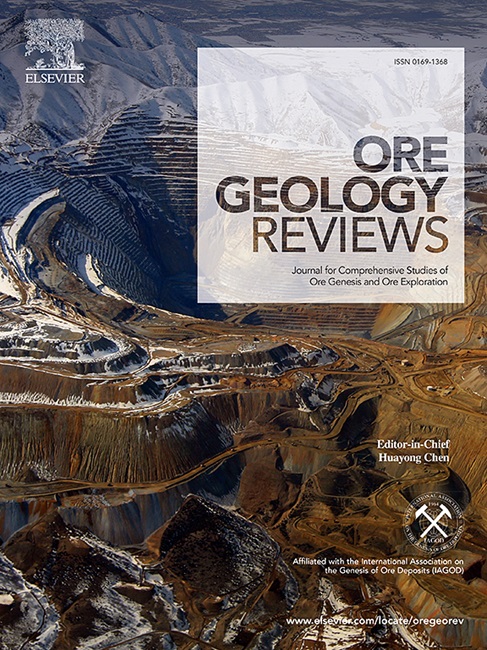Translation of mineral system components into time step-based ore-forming events and evidence maps for mineral exploration: Intelligent mineral prospectivity mapping through adaptation of recurrent neural networks and random forest algorithm
IF 3.2
2区 地球科学
Q1 GEOLOGY
引用次数: 0
Abstract
In the integration step of conventional mineral prospectivity analysis approaches chronology of ore-forming subsystems is ignored leading to less reliable predictions. In this paper, we design and adapt recurrent neural network architectures, which have the ability of modelling sequence-related natural events, and a random forest algorithm to bring the temporal nature of ore-forming subsystems into prospectivity analysis procedure and to mitigate the aforementioned issue. A dataset of Pb-Zn mineralization in Semnan Province, Iran, is used to illustrate the procedure. The exploration targets in the prospectivity maps show excellent agreement with the deposit locations, demonstrating the importance of incorporating the chronology of ore-forming geological processes in targeting mineral deposits. This study links our understanding of the chronology of mineral system parameters to predictive modeling to support decision-making in mineral exploration targeting.

求助全文
约1分钟内获得全文
求助全文
来源期刊

Ore Geology Reviews
地学-地质学
CiteScore
6.50
自引率
27.30%
发文量
546
审稿时长
22.9 weeks
期刊介绍:
Ore Geology Reviews aims to familiarize all earth scientists with recent advances in a number of interconnected disciplines related to the study of, and search for, ore deposits. The reviews range from brief to longer contributions, but the journal preferentially publishes manuscripts that fill the niche between the commonly shorter journal articles and the comprehensive book coverages, and thus has a special appeal to many authors and readers.
 求助内容:
求助内容: 应助结果提醒方式:
应助结果提醒方式:


